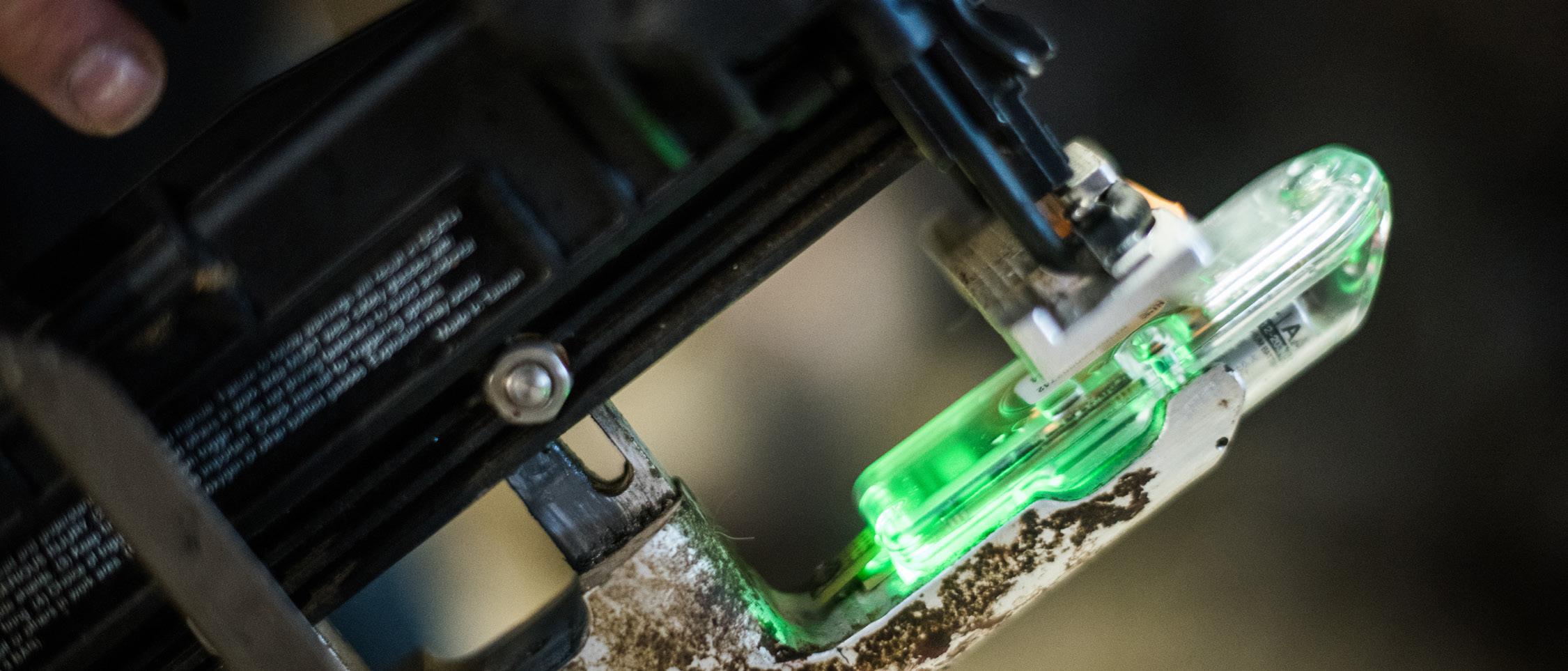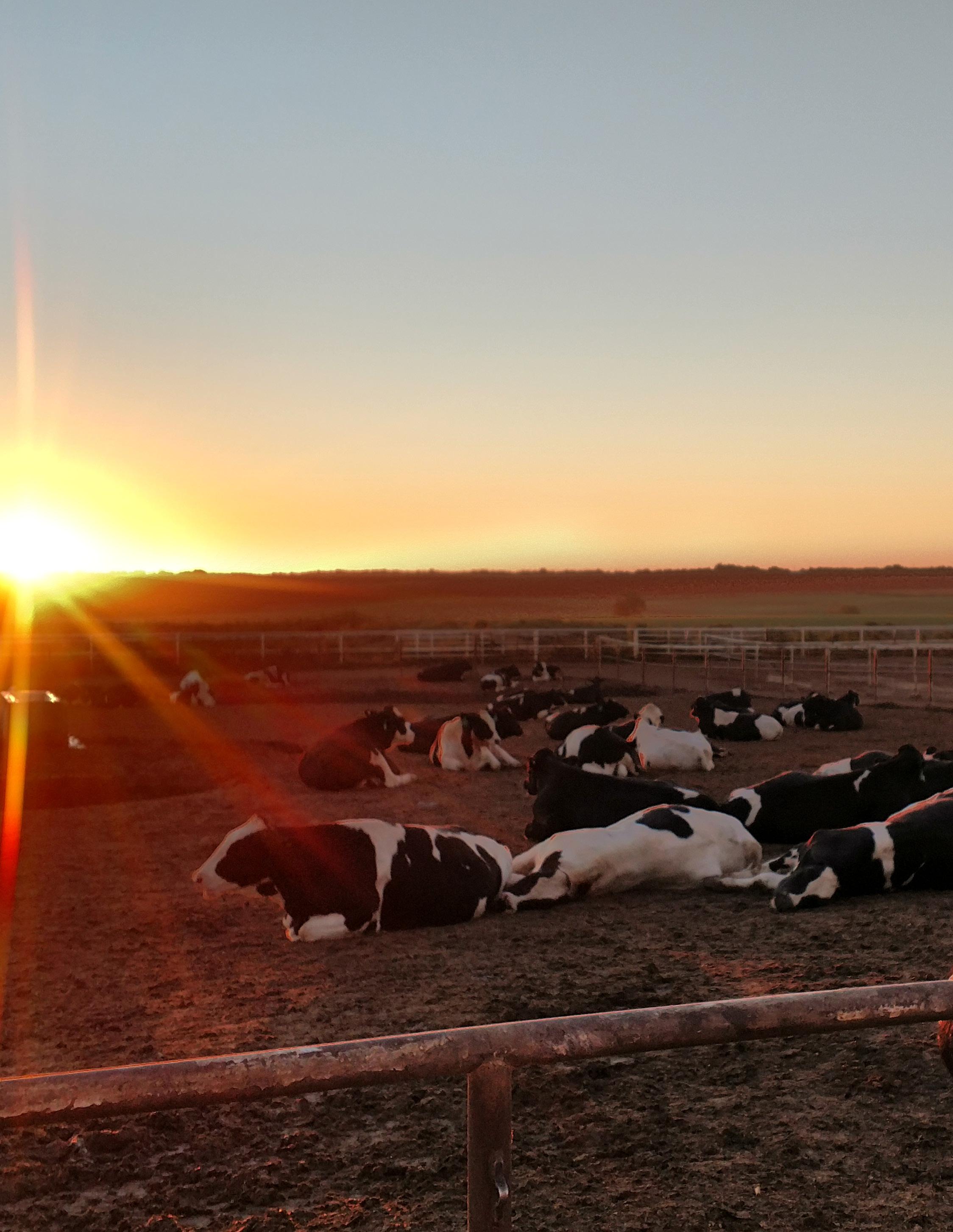
2 minute read
Keeping an LED Eye on Sick Feedlot Cattle
By: Bethany Johnston, University of Nebraska Extension,
reprinted with permission from Progressive Cattlemen. The article appeared in their November 2016 issue.
Putting a rancher in the hospital is like trying to bag an angry tomcat to haul him to the vet.
Even if the cat resembled death the minute before, if there is any spunk left, the claws and teeth shred your shirt sleeves to ribbons as he continues hissing into the bottom of the bag.
If you have been unbagged, I mean, admitted to the hospital for more than a few days, you realize: 1) the walls get smaller every day, 2) your grip on the little red button relaxes as you feel better, and 3) your thoughts wander.
Think about the life of a nurse before that little red button. The nurse would stride through the halls, patrolling the rooms, even the bright-eyed, on-the-mend patients. Ticktock-tick-tock.
Think of the wasted minutes checking on healthy clients, who yell at the nurse for waking them from their nap. What about the severely ill teetering on the edge of death? Or the stitch-in-time patients whom timely medicine would cure? Too bad the nurse was checking on the healthy lot.
Your thoughts drift from hospitals to feedyards. The average pen rider patrols the lots, on average eyeing 4,000 to 7,000 head daily – a mere four seconds per head to declare the animal “healthy” or “sick.” Can you imagine how helpful that little red button could be to the feedlot labor and the sick animals?
For the last couple years, the company, Quantified Ag, envisioned, created and just finished testing a little red button for sick cattle. But the little red button is actually an electronic ear tag. And instead of the nurses’ station, your smartphone receives the alert.
“We saw a need in the feedlot industry and created a sim- ple, user-friendly product,” says Vishal Singh, CEO. Why the feedlot setting? The feedlot provides a concentrated number of animals, whose health is evaluated in seconds.
As death losses creep up for many feedlots, a tool like this electronic ear tag can greatly improve herd health, especially for light, high-risk calves.
Reading the signs
The team, including Andrew Uden (COO), Brian Schupbach (CTO) and Alex Heine (product development), succeeded in developing an easy-to-use product that saves time, money and the ability to doctor animals before physical symptoms appear.
The ear tag collects vital signs directly from the animal, beams the information to a receiver, then a computer or smart device is notified with the tag numbers of the sick animals.
Unlike a normal dangling ear tag, this cylinder-shaped ear tag nestles inside the top curve of the ear (the part of the ear you clean out before tattooing).
The ear tag is quickly clipped to the ear during processing with a companion air gun and staple, specially designed to work with the ear tag. Whiiish, clip, done.
The first signs of a sick animal are higher temperatures and less activity. The body temperature is monitored by a laser pointing down the ear canal, biometrics (the behavior of the animal) and range of motion is monitored for decreased movement (indicating a sick animal). Other components tucked in the small cylinder of the ear tag include RFID (radio frequency identification) and a LED light.
When an animal’s symptoms trigger a threshold, the pen rider’s cell phone notifies them of the sick animal. Pen riders trot directly to the pens with sick animals, while overlooking the healthy pens.
From Uden’s experience in feedyards, 50 to 60 percent











